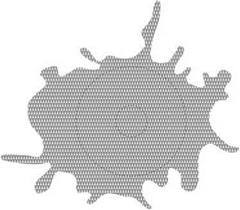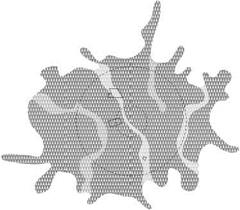Continuous Productive Urban Landscapes are about urban food growing and local consumption. They will include livestock, but consist largely of vegetation which is locally managed: mainly organic vegetables, fruit and trees, planted in rows, planted in groups, fields, patches, etc. Vegetation will be chosen for its inherent extractable energy (i. e. it can be eaten) or its material quality (i. e. it can be worn), then grown, harvested, traded and consumed. The main production will be carried out by local occupants who rent the land and work it commercially within an individually defined local framework (see Chapters 17 and 25). Cities that decide to support this concept of organic local farming, trading and seasonal consumption will never be fully self-sufficient in food production. They will still be required to bring food into the city from the hinterland, but less of it and in a more focused, need – oriented way.
Producing food where one wants to eat it, or consuming food where it has just grown, establishes a healthy and sustainable balance of production and consumption. It is an effective and practical, but at the same time self-beneficial way of reducing the energy embodied in contemporary Western food production.
This reduction of embodied energy is crucial for several reasons. The energy – mainly nonrenewable – currently used for conventional food
|
|
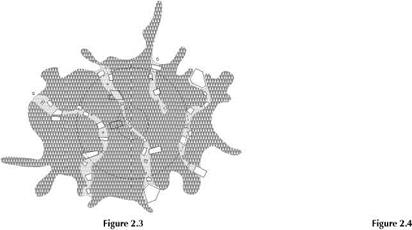
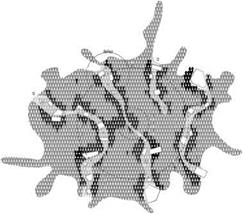
Figure 2.1 An established city with no CPULs. Figure 2.2 Identifying continuous landscapes. Figure 2.3 Inserting productive urban landscapes. Figure 2.4 Feeding the city.
![]()
|
|||
|
|
||
|
|||
|
|
||
|

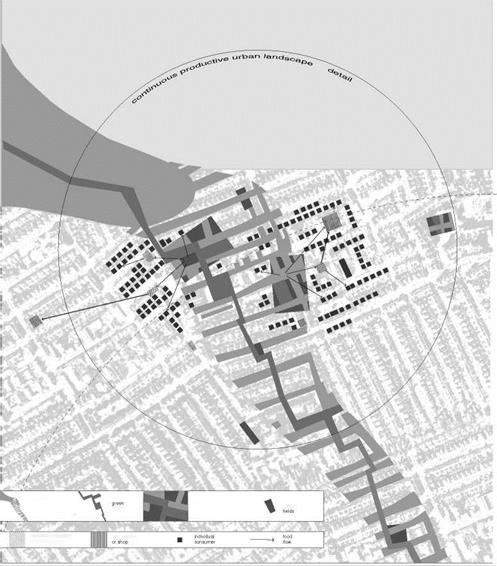
production, for example in Europe, exceeds by far the energy received in return from consuming the produced food. The unlimited, daily usage of nonrenewable energy contributes significantly to global resource depletion and, through greenhouse gas emissions, to global warming (see Chapter 3).
One might argue that concentrating on the energy consumed by current remote food production does not allow for the future development of environmentally clean energy technologies. But, firstly, such a position fails to recognise that the inequitable distribution and consumption of resources extends beyond energy usage, i. e. to raw materials, desirable land, water and food. Reducing the energy requirements of goods and processes shrinks the divide between those who have access to abundant energy supplies and those who do not, without limiting the availability of final products.
Secondly, CPULs will not solely concentrate on addressing embodied energy in the first place. They will be environmentally productive dealing not only with local food, but also with issues such as greenhouse gas (CO2) reduction, improving air quality and air humidity, noise filtering and biodiversity. They will also be sociologically productive: their urban concept will involve, amongst others, cultural, educational and leisure activities, shopping habits or diet and health concerns. Last but not least, they will be economically productive, provoking new strategic socio-economic thinking and changing local employment and product-cash flow patterns (see Chapter 8). CPULs will provide a completely different concept for the use of the city.

